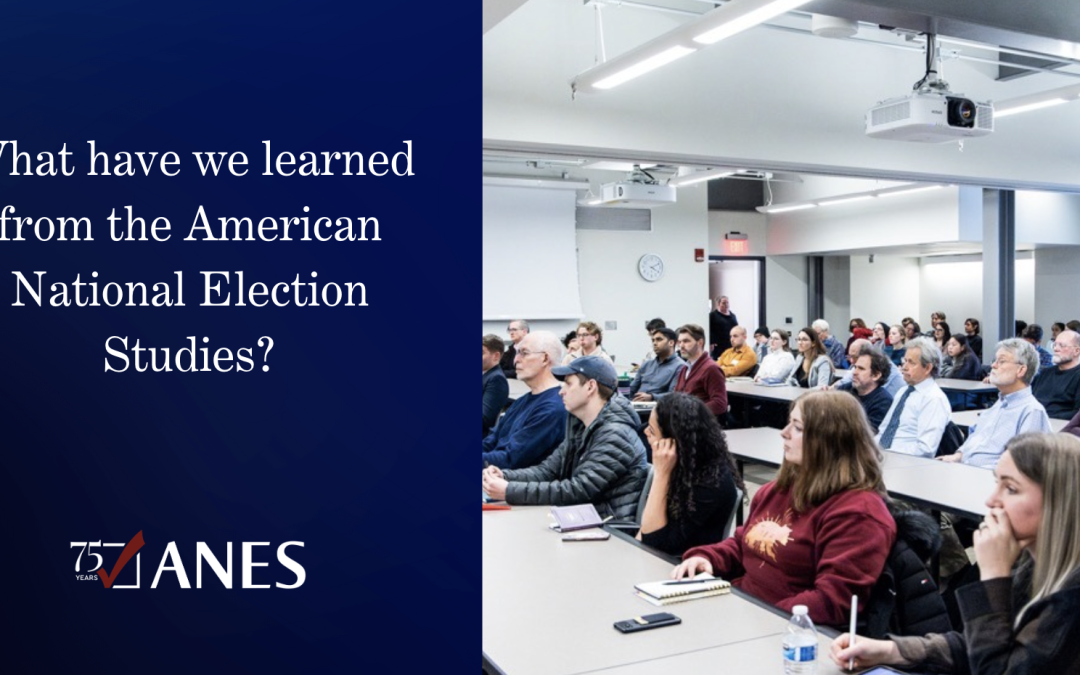One of the early discoveries of the founders of the American National Election Studies (ANES) was that psychological attachments to parties themselves are group identities: Americans often vote as their parents did, and maintain allegiance to parties over time.
The ANES has surveyed Americans before and after every U.S. presidential election since 1948, providing us with rich insights into why and how Americans vote. In recognition of the ANES’s 75th anniversary, the Center for Political Studies reached out to scholars to ask what we know about American politics, voters and voting behaviors because of the ANES. This is what they told us:

“In numerous publications (for a summary see Sears & Funk, 1991) we have used it to challenge the idea that self-interest is a pervasive motive, rather than an occasional exception, in Americans’ voting decisions.”
– David O. Sears, Distinguished Professor Emeritus, UCLA
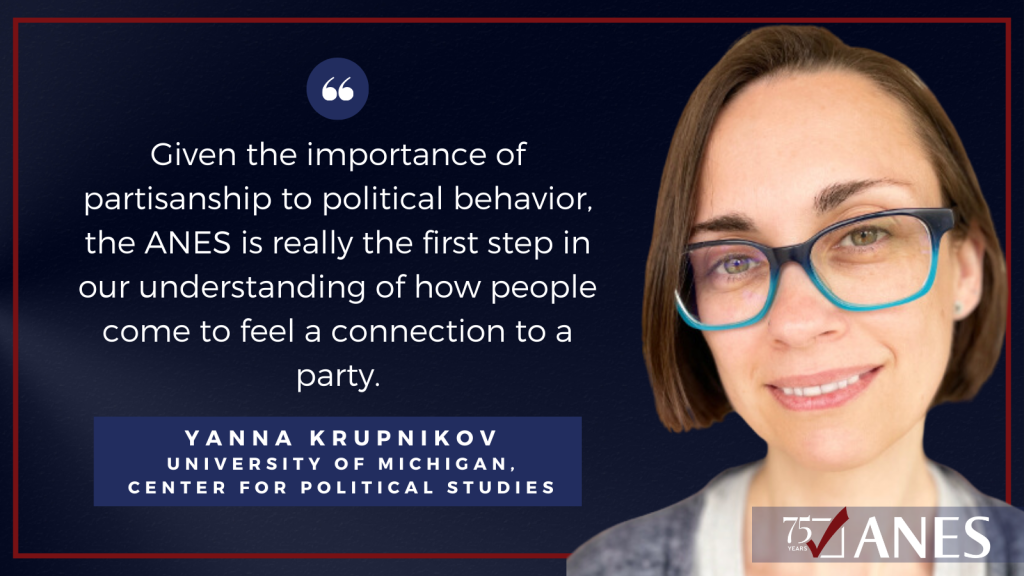
“The ANES is one of the earliest surveys of the American public. Much of the research on partisanship, for example, emerges directly from the way that the ANES asks people about their party identification. Concepts like a ‘leaning independent’ – someone who identifies as an independent but ‘leans’ toward one of the two parties– largely exist because of the ANES. Given the importance of partisanship to political behavior, the ANES is really the first step in our understanding of how people come to feel a connection to a party.”
– Yanna Krupnikov, Professor of Communication and Media, University of Michigan; Faculty Affiliate, Center for Political Studies
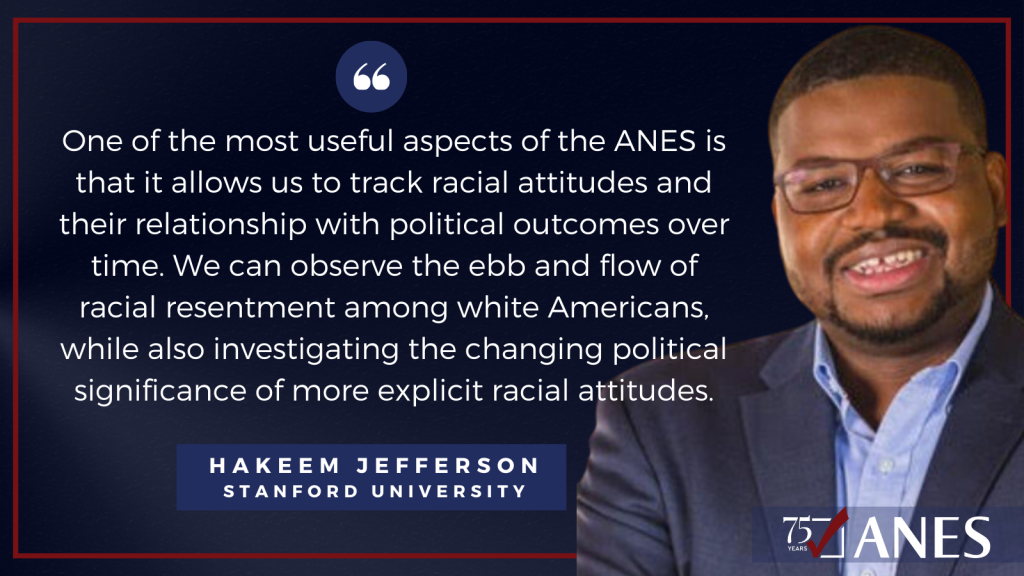
“As a scholar of race and politics, one of the most useful aspects of the ANES is that it allows us to track racial attitudes and their relationship with political outcomes over time. For example, we can observe the ebb and flow of racial resentment among white Americans, while also investigating the changing political significance of more explicit racial attitudes. In more recent years, the ANES has allowed for the careful study of white identity and its relationship to some of the most consequential political outcomes of our time, including white Americans’ support for Donald Trump. There is no doubt that the ANES will remain a vital tool for generations of scholars to come.”
– Hakeem Jefferson, Assistant Professor of Political Science, Stanford University
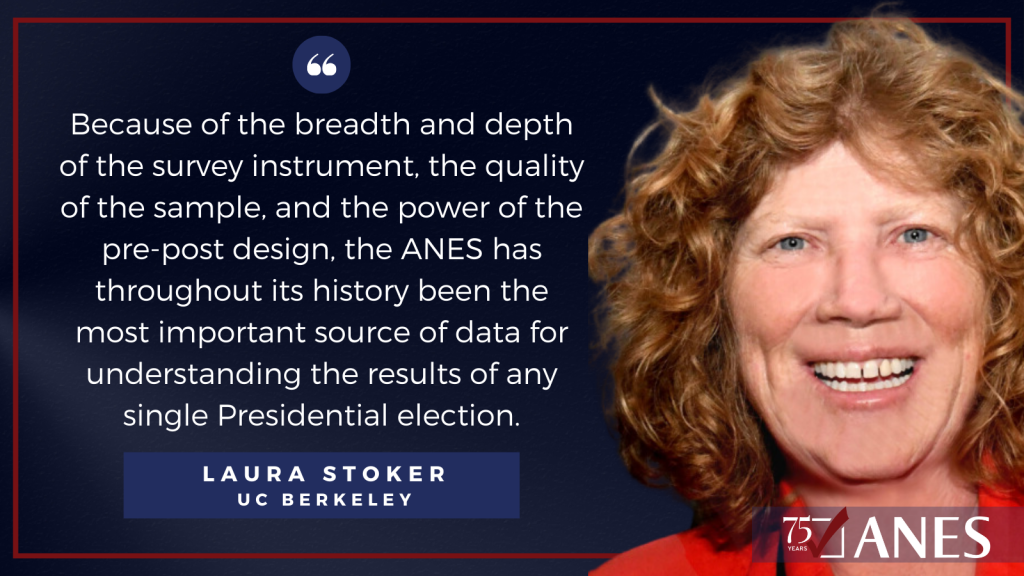
“The contemporary study of American public opinion and elections rests on the foundation of research from the earliest ANES studies, represented in highly influential publications such as The American Voter (Campbell, Converse, Miller, and Stokes 1960), Elections and the Political Order (Campbell, Converse, Miller, and Stokes 1967), and “The Nature of Belief Systems in Mass Publics,” (Converse, 1964). Scholars today continue to work with many of the concepts, measures, and ideas introduced in those early studies. Because of the breadth and depth of the survey instrument, the quality of the sample, and the power of the pre-post design, the ANES has throughout its history been the most important source of data for understanding the results of any single Presidential election. Because the ANES has made continuity in the survey instrument a priority, the data have also been invaluable for identifying and explaining how public opinion and voting behavior have changed over time. Scholars have used the data to make inter-election comparisons (e.g., support for Trump in 2016 vs. 2020, dynamics in the Obama elections compared to before or after) as well as longer-term comparisons (e.g., in the size of voting gaps by party, gender, race, and place; in levels of affective polarization, partisan defection, independent identification, voter turnout, and political trust). At the same time, the ANES has continued to innovate and respond to new political contexts in developing its questionnaires, fueling new research agendas. For example, the most recent study included new questions regarding populism, racial and policy attitudes, electoral integrity, social media use, and rural resentment.”
– Laura Stoker, Professor of the Graduate School in the Department of Political Science at the University of California, Berkeley, Emerita
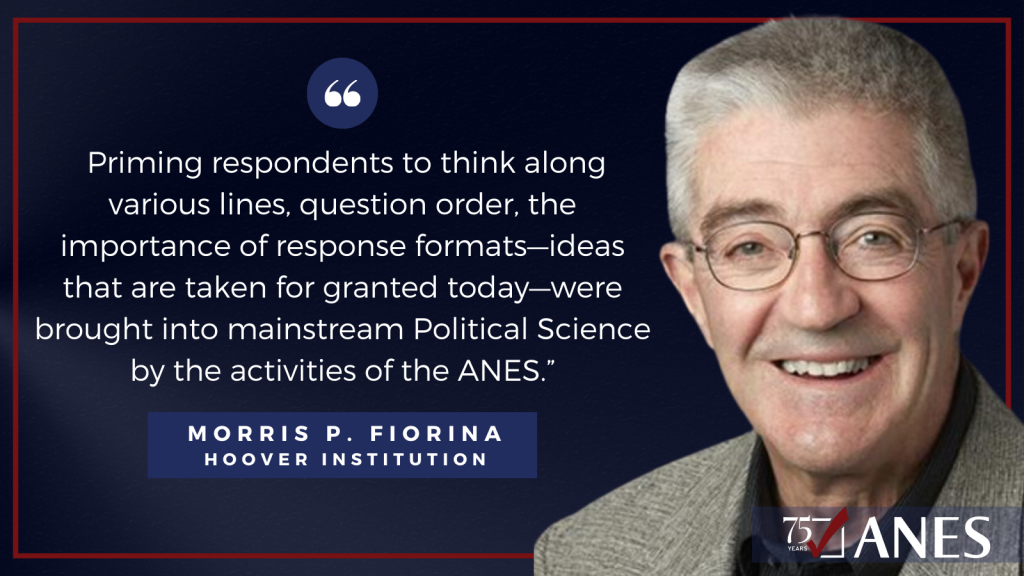
“Looking back over the decades, it’s worth noting the enormous intellectual progress that the ANES participated in and helped to generate—when you’re low on the learning curve progress is rapid. Many ideas that are imparted to undergraduates in Survey Research 101 today were being discovered or becoming appreciated in the early 80s. I remember Don Kinder bringing in a paper to a Board meeting showing the different responses obtained by framing survey items in different ways. Priming respondents to think along various lines, question order, the importance of response formats—ideas that are taken for granted today—were brought into mainstream Political Science by the activities of the ANES.”
– Morris P. Fiorina, the Wendt Family Professor of Political Science and a Senior Fellow, Hoover Institution

“The contributions of the ANES data sets to the understanding of American politics, particularly voting behavior and public opinion, are beyond counting at this point. But to my mind, the greatest is the opportunity they provide for scholars to trace and explore both the continuities and profound changes in mass political attitudes and behavior over the past 75 years. In my primary research domain of congressional elections, the world of the 2020s looks vastly different from the world of the 1960s and 1970s. The time series studies have documented key changes in real time (as measured in election years), and as new developments have raised new questions, being able to go back and reconsider old data in a new light has been invaluable for anyone trying to figure out what has happened. A good example is how the time series has revealed the growing coincidence of ideology, policy preferences, religiosity, and demography (race, gender, age, and education) with partisanship, trends that have made the party coalitions increasingly homogeneous internally and distant from one another. If you are looking to explore the causes and consequences of the polarized partisanship that now plagues us, this is an excellent place to start.”
–Gary Jacobson, Distinguished Emeritus Professor of Political Science, UC San Diego
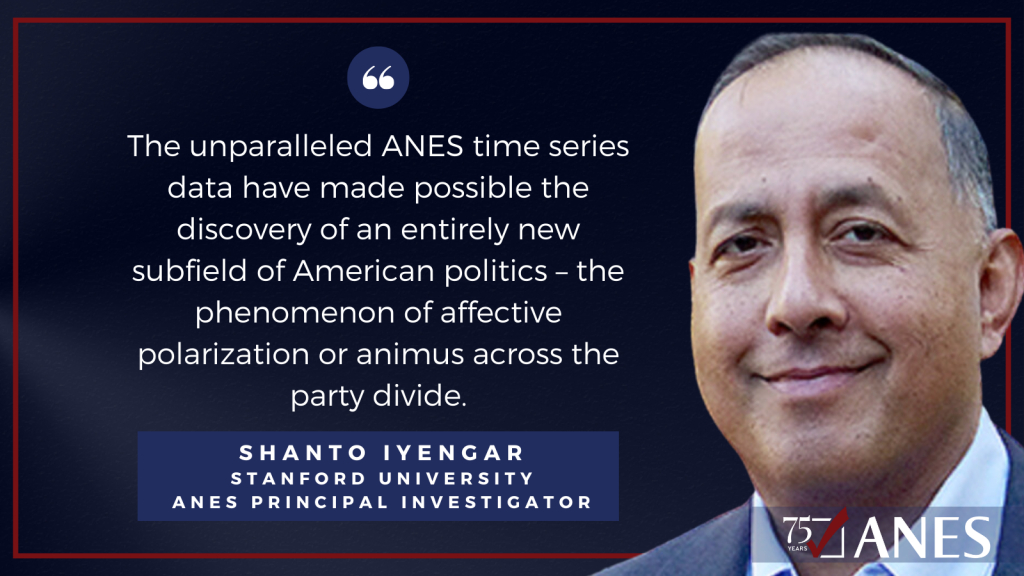
”The unparalleled ANES time series data have made possible the discovery of an entirely new subfield of American politics – the phenomenon of affective polarization or animus across the party divide. Using the ANES feeling thermometers, which date back to the 1970s, scholars documented a significant increase over time in partisans’ hostility toward their opponents. This finding, first published in 2012, has since generated more than 350 published papers (with the term affective polarization in the title) and approximately 1,2000 citations (from Google Scholar). I would add that the ANES database has greatly facilitated my own research over the past decade into partisan affect and the underlying causes of polarization.”
– Shanto Iyengar, Professor of Political Science and Director of the Political Communication Laboratory, Stanford University, and ANES Principal Investigator
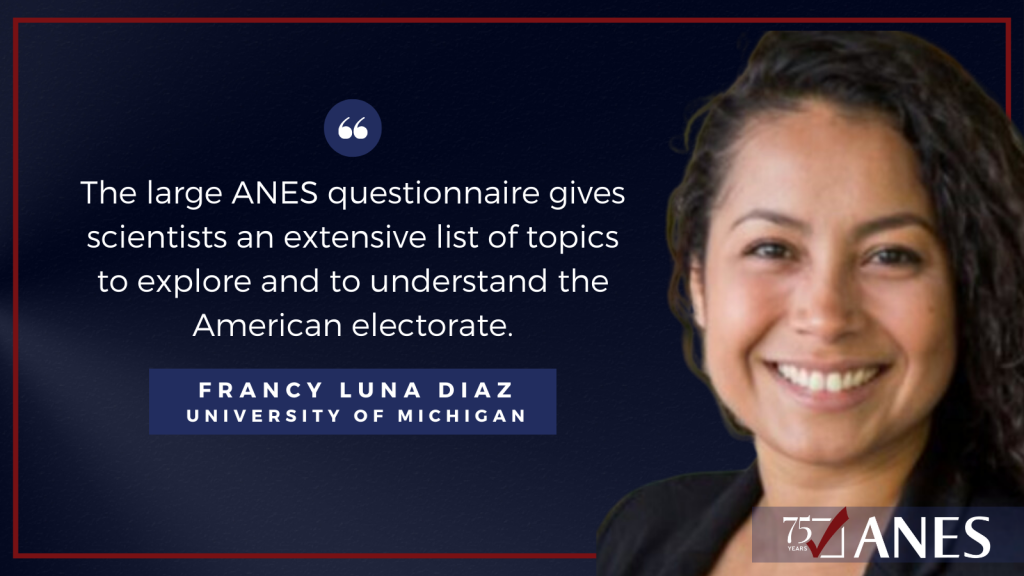
“Thanks to the ANES’s commitment to high-quality data, scientists have advanced what we know about social attitudes, policy preferences, and voting behavior, among many other topics. More specifically, ANES data has allowed scientists to unveil opinions on specific issues for different segments of the electorate- for instance, how Americans view immigration, how education relates to political knowledge and participation, or what people like about specific presidential candidates. The large ANES questionnaire gives scientists an extensive list of topics to explore and to understand the American electorate.”
– Francy Luna Diaz, Ph.D. Candidate in Political Science at the University of Michigan

“[Because of the ANES], we know about the predominant importance of party identification in political evaluations and vote choices. We know how much motivated reasoning exists in politics, and how much of it is driven by party ID. We know about the poor consistency and lack of ideological constraint in the policy views of the American public. We know how little the public knows about their representatives in Congress. We know that the variance in general political knowledge among the American public is high, but the mean is low. We know about the different types of political behaviors that some people perform, and how many performers there are for each of those. Despite what economists think, we know how little tangible self-interest has to do with most political attitudes. We know a great deal about how race, and racism, shapes policy views in the country. We have learned a great deal about the gender gap in American politics.”
– Richard R. Lau, Professor of Political Science at Rutgers University
This post is part of a series celebrating the 75th anniversary of the American National Election Studies (ANES). It was developed by Tevah Platt. Read our companion posts on the history of the ANES, its influence on scholarship, and where it stands today.

